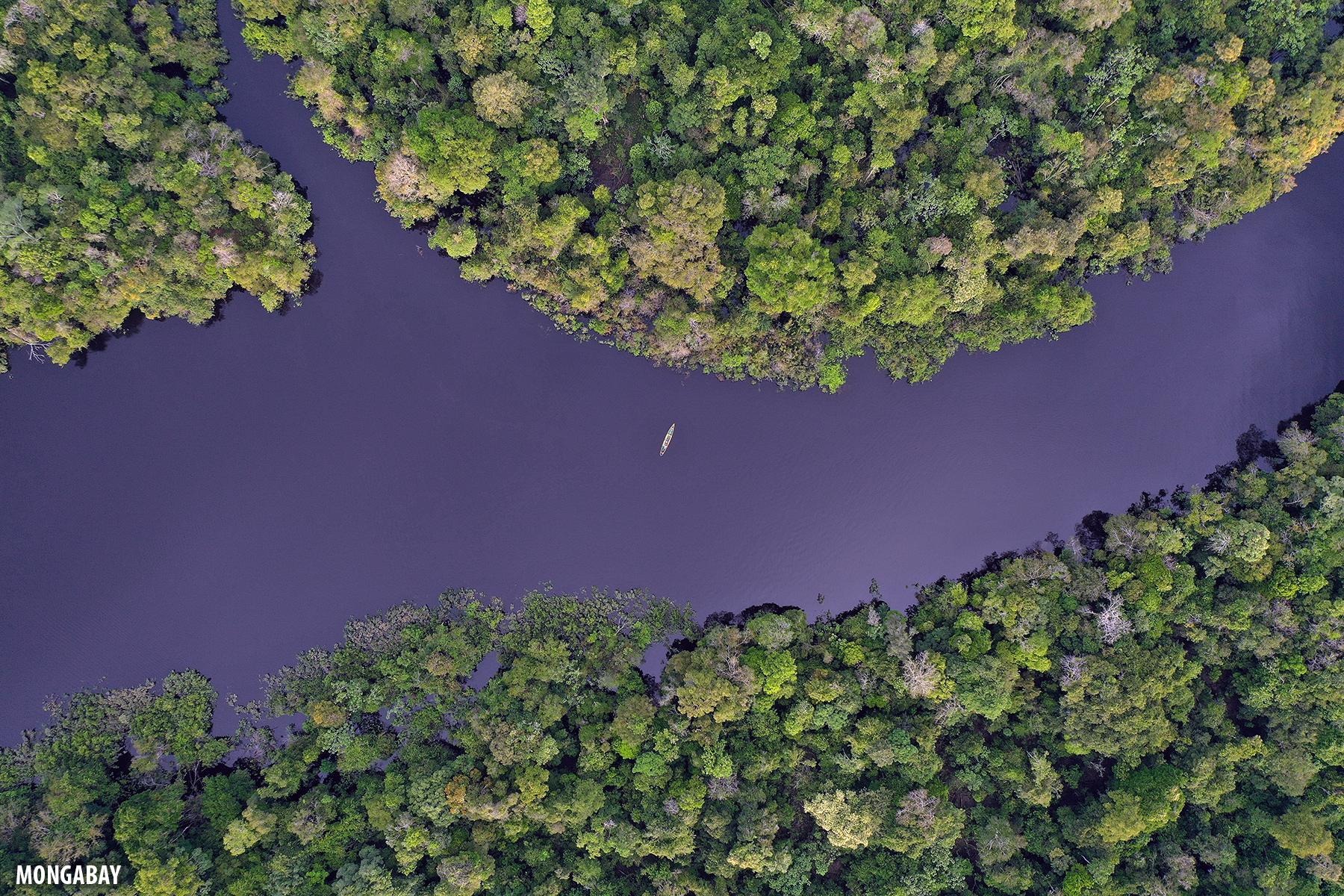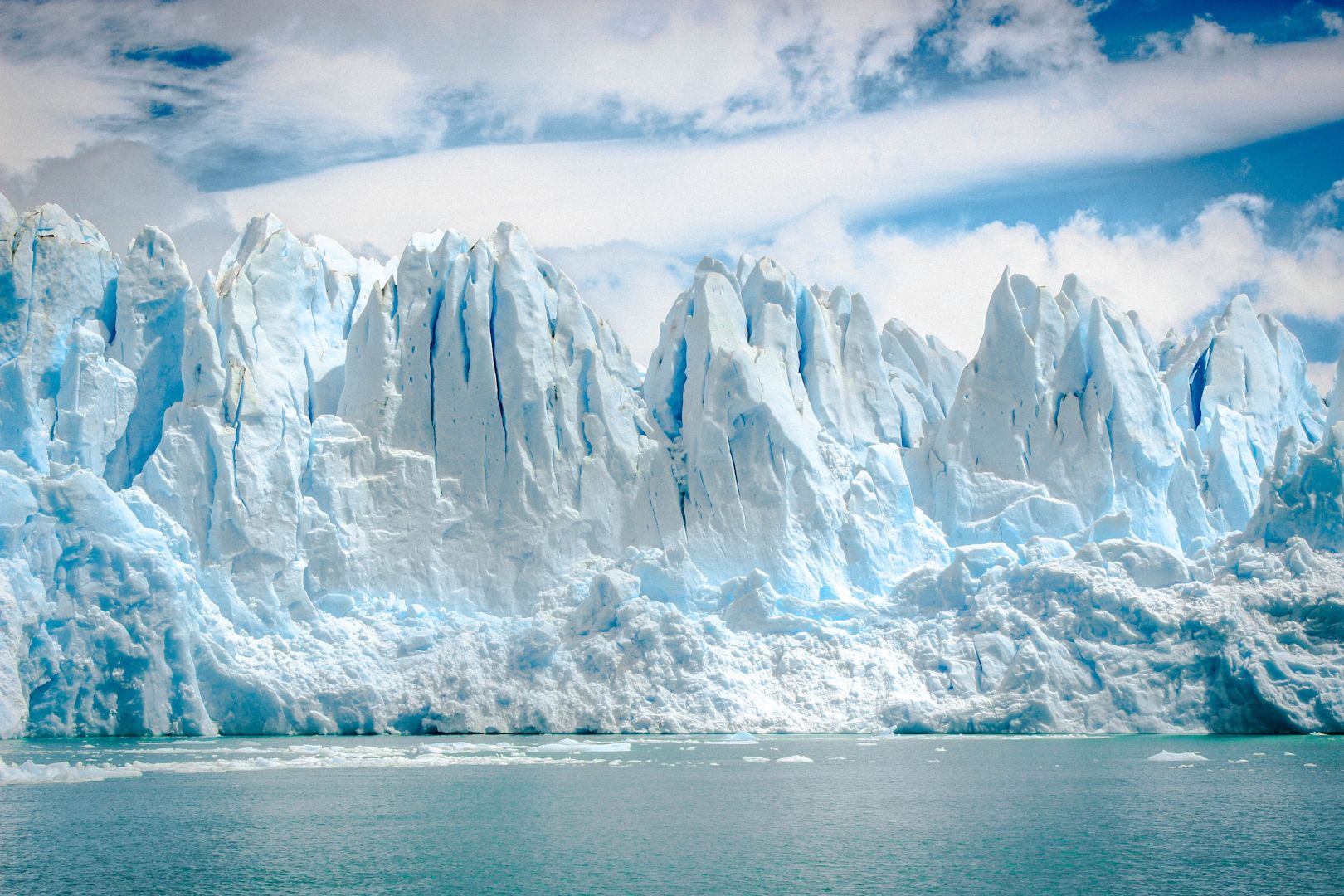This article originally appeared in Mongabay.
- A new risk analysis has found that the tipping points of five of Earth’s subsystems — the West Antarctic Ice Sheet, the Greenland Ice Sheet, the Atlantic Meridional Overturning Circulation (AMOC), the El Niño–Southern Oscillation (ENSO) and the Amazon rainforest — could interact with each other in a destabilizing manner.
- It suggests that these changes could occur even before temperatures reach 2°C (3.6°F) above pre-industrial levels, which is the upper limit of the Paris Agreement.
- The interactions between the different tipping elements could also lower critical temperature thresholds, essentially allowing tipping cascades to occur earlier than expected, according to the research.
- Experts not involved in the study say the findings are a significant contribution to the field, but do not adequately address the timescales over which these changes could occur.
When the first tile in a line of dominoes tips forward, it affects everything in front of it. One after another, lined-up dominoes knock into each other and topple. This is essentially what could happen to ice sheets, ocean currents and even the Amazon biome if critical tipping points are crossed, according to a new risk analysis. The destabilization of one element could impact the others, creating a domino effect of drastic changes that could move the Earth into an unfamiliar state — one potentially dangerous to the future of humanity and nature as we know it.
The study, published this month in Earth System Dynamics, examines the interactions between five subsystems that are known to have vital thresholds, or tipping points, that could trigger irreversible changes. They include the West Antarctic Ice Sheet, the Greenland Ice Sheet, the Atlantic Meridional Overturning Circulation (AMOC), the El Niño–Southern Oscillation (ENSO) and the Amazon Rainforest.
Scientists believe the AMOC could reach its critical threshold when warming temperatures weaken the current enough to substantially slow it, halt it, or redirect it, which could plunge parts of the northern hemisphere into a period of record cold, even as global warming continues elsewhere. Likewise, the Antarctic ice sheet may reach its irreversible threshold when warming temperatures trigger a state of constant ice loss, which could ultimately result in a 4-meter (13-foot) rise in global sea levels over the coming centuries. In fact, it’s suggested that the West Antarctic Ice Sheet may have already passed its critical threshold, and that ice loss is unstoppable now.

These individual tipping points are largely being driven by human-caused climate change, which is considered to be one of nine planetary boundaries — scientifically identified limits on change to vital Earth systems that currently regulate and sustain life. Overshooting those boundaries could lead to new natural paradigms catastrophic for humanity. Climate change has its own threshold of 350 parts per million (ppm) of CO2, which is the amount that scientists say the atmosphere can safely hold, but this threshold was already passed in 1988. In 2021, CO2 exceeded 417 ppm, which is 50% higher than pre-industrial levels.
To conduct this new study, the research team used a conceptual modeling process to analyze the interactions between these five Earth subsystems. What they found was that more than a third of these elements showed “tipping cascades” even before temperatures reached 2° Celsius (3.6° Fahrenheit) above pre-industrial levels, which is the upper limit of the 2015 Paris climate agreement. At present, almost no nation on Earth is on target to meet its Paris carbon reduction goals.
Significantly, the study also found that the interactions between the tipping elements could lower critical temperature thresholds, essentially allowing tipping cascades to occur earlier than anticipated. Additionally, the researchers found that the Greenland Ice Sheet would function as an initiator of tipping cascades, while the AMOC would act as a transmitter that would push further changes, including dieback of the Amazon. Most of these tipping elements have been projected to have a destabilizing effect on each other, with the exception of the weakening of the AMOC, which could actually make the North Atlantic region colder and help stabilize the Greenland Ice Sheet.

“We found that the overall interactions tend to make [things] worse, so to say, and tend to be destabilizing,” lead author Nico Wunderling, a scientist at the Potsdam Institute for Climate Impact Research in Germany, told Mongabay.
He said that the findings suggest that we already face significant risk, but that the study does not necessarily provide a forecast.
“We have made a risk analysis,” Wunderling said. “This is not a prediction, but it’s more like, ‘OK, if we have this warming, then we might face an increasing risk of tipping cascades.’”
Tim Lenton, a professor of climate change and Earth system science at the University of Exeter, U.K., and co-author of a similar study on tipping points, says the new paper is a “useful addition to the assessment of climate tipping point interactions.”
“The important takeaway message from this study is that the cascading causal interactions between four different climate tipping elements lower the ‘safe’ temperature level at which the risk of triggering tipping points is minimized,” Lenton told Mongabay in an email. “In fact the study suggests that below 2C of global warming (above pre-industrial) — i.e. in the Paris agreement target range — there could still be a significant risk of triggering cascading climate tipping points.”
However, Lenton says the study does not unpack the timescale in which these tipping cascades would occur, focusing more on their consequences.

“In the case of ice sheet collapse this can take many centuries,” he said. “Hence the results should be viewed as ‘commitments’ to potentially irreversible changes and cascades that we may be making soon, but will leave as a grim legacy to future generations to feel their full impact.”
Juan Rocha, an ecologist at the Stockholm Resilience Centre, says the findings of the study affirm previous hypotheses about how “the tipping of one system can affect the likelihood of others in a self-amplifying way,” although he also notes its oversight of evaluating timescales.
“The Amazon is likely to tip way earlier than AMOC or Greenland,” Rocha told Mongabay. “Future work needs to take into account the diversity and uncertainty of the feedbacks at play for each tipping element to really understand how likely [it] is that one system can tip the other.”
Rocha says he’s pleased the authors undertook this study and hopes others continue to build on this research.
“I would like to extend an invitation to the authors and the scientific community to keep working on these important questions,” he said. “There is a lot of work to do, a lot that we do not know, and our models can only get us so far. Understanding how different systems of the Earth … are connected is fundamental to avoid the risk of domino effects, but also to empower people to act on time, identify leverage points and understand the extent of action or lack of it.”
Citations:
Cai, Y., Lenton, T. M., & Lontzek, T. S. (2016). Risk of multiple interacting tipping points should encourage rapid CO2 emission reduction. Nature Climate Change, 6(5), 520-525. doi:10.1038/nclimate2964
Wunderling, N., Donges, J. F., Kurths, J., & Winkelmann, R. (2020). Interacting tipping elements increase risk of climate domino effects under global warming. Earth System Dynamics, 12, 601-619. doi:10.5194/esd-12-601-2021
Elizabeth Claire Alberts is a staff writer for Mongabay. Follow her on Twitter @ECAlberts.


Science is finally catching up(our models can only get us so far) to what indigenous people have always known, that everything is connected. It is way past time to put down the pencils and the drills. The task at hand is to “empower people to act on time”. Telling people to STOP destroying life on the planet with consumerism should be on the nightly news everyday.
Don’t forget over-breeding in addition to consumerism. Scientists have long said that the best thing that people can do to fight global warming/climate change is to have no kids, or at least fewer kids. And overpopulation is very far from being the only problem, and isn’t even a root cause of anything, despite being an existential problem.
As to western science v. traditional indigenous thought: If you only see life & the universe through the lens of the intellect, you’re missing out on most of life & the universe. The intellect is merely a tool, but humans have grossly overused and over-prioritized it for a very long time, and these are the results of that wrongful thinking and attitude (in addition to other wrongful thinking and attitudes).
I meant to say that global warming/climate change isn’t the only problem and is not a root cause.
The word “Could” appeared 13 times in this article when the reality is all of these ‘Tipping Points’ have been crossed.
The Cognitive Dissonance at the Edge of Extinction is a mind fuck.
https://kevinhester.live/2020/02/28/cognitive-dissonance-and-outright-lies-at-the-edge-of-extinction/
In general, this study reflects what many of us have been worrying about for years — that the interaction of various factors can cause new problems, and that the future is probably already at greater risk than we know, due to what the late Donald Rumsfeld called “the known unknowns.”
In the words of the Hippocratic Oath, “First, do no harm.” In other words, do as little as possible to add to the things that threaten life on Earth: Consume, travel, and reproduce minimally.
In particular, avoid meat, imports and exports, and motor vehicles. And please don’t “start a family.” There are already more families than the planet can support.